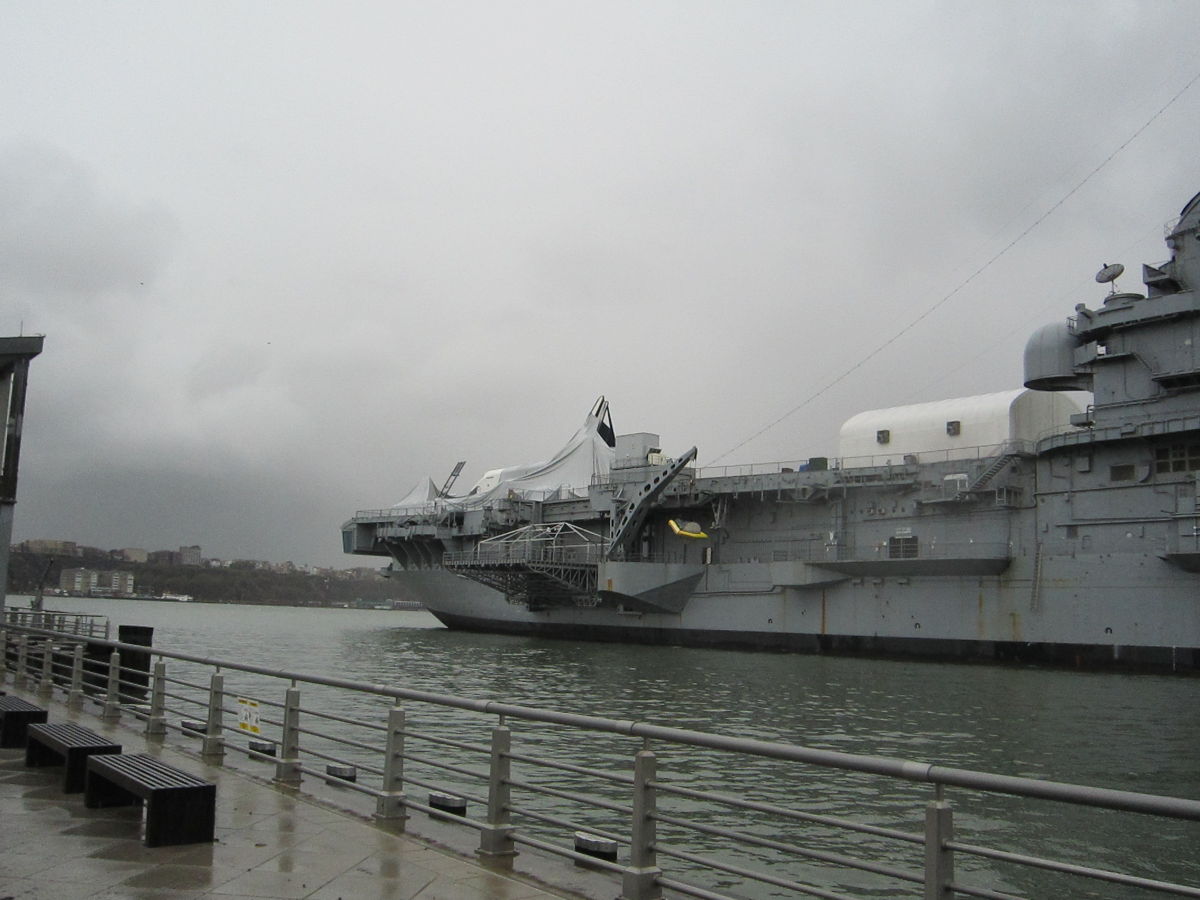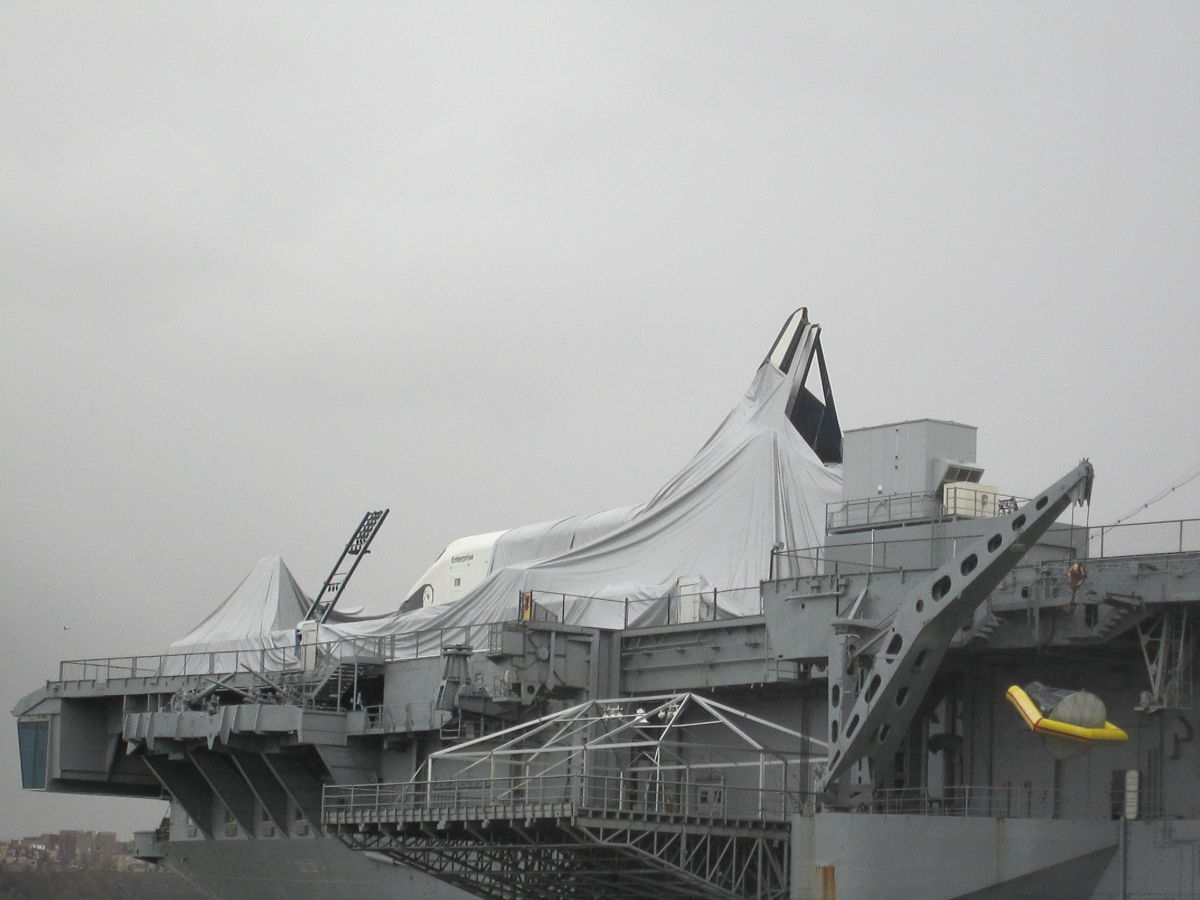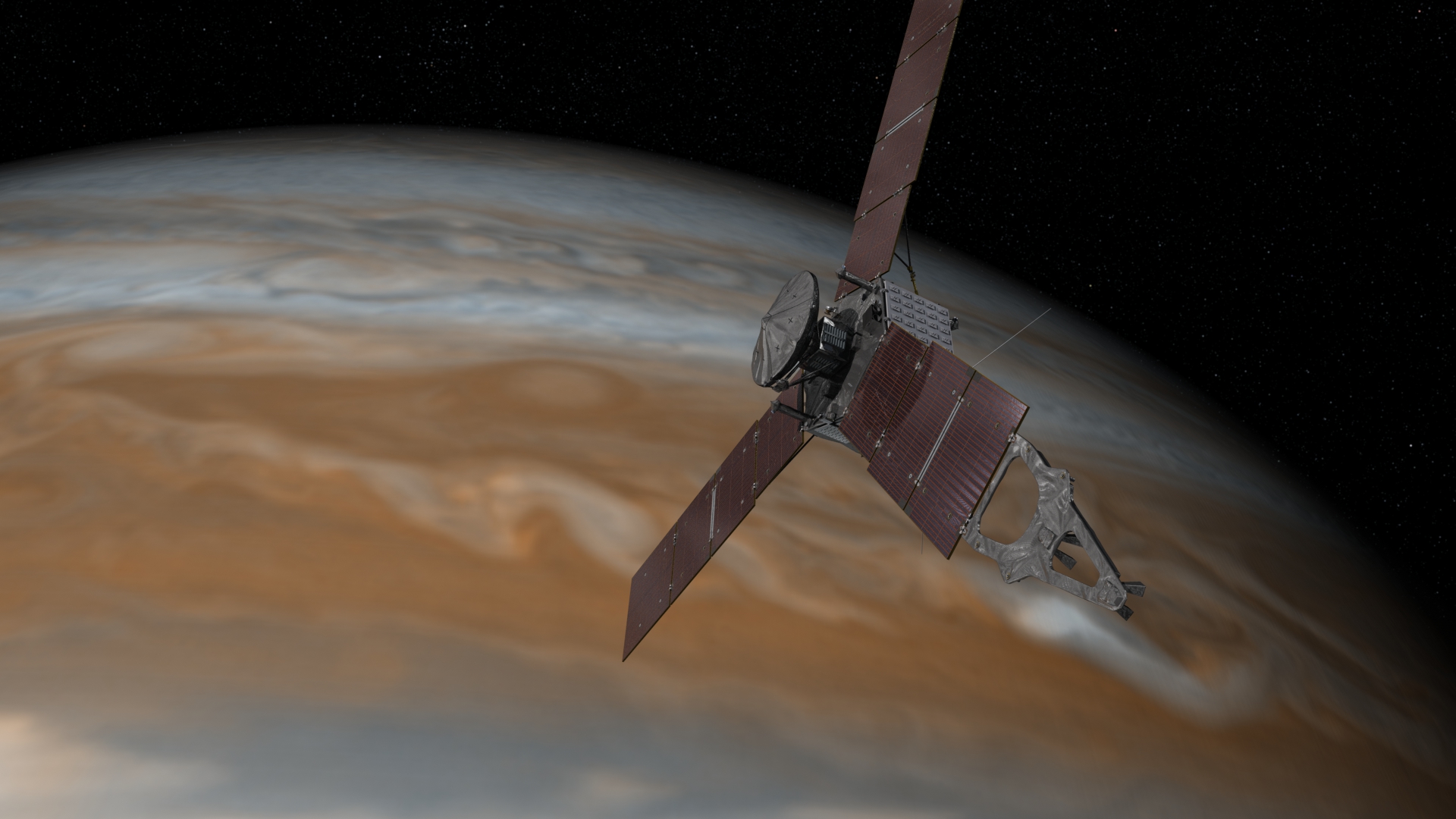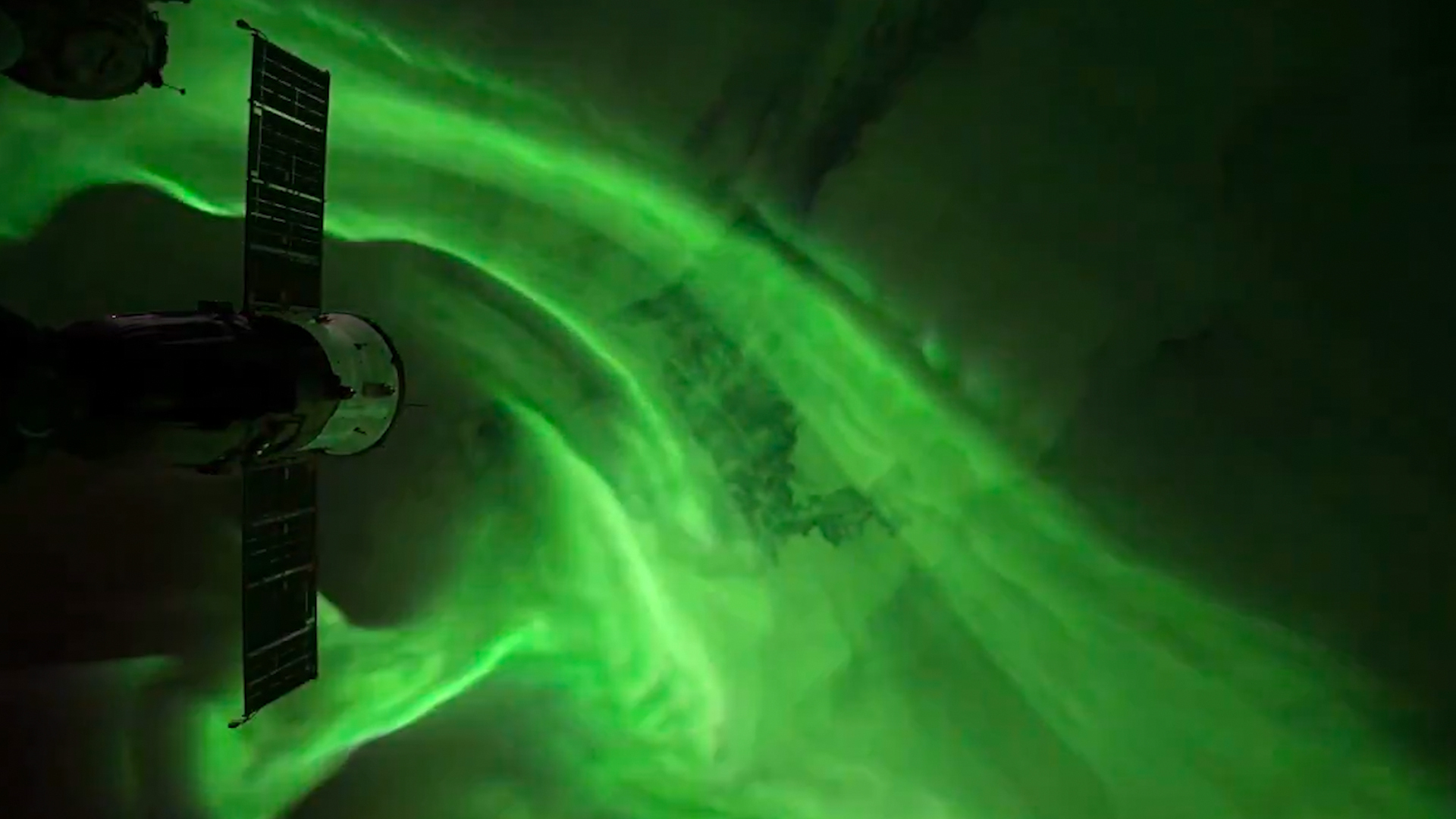Space Shuttle Enterprise Damaged by Hurricane Sandy

This story was updated at 6:20 p.m. ET.
Space shuttle Enterprise, NASA's original prototype orbiter, is sitting exposed and appears to have been partially damaged by Hurricane Sandy after the severe storm passed over New York City on Monday night (Oct. 29).
On display on board the flight deck of the Intrepid Sea, Air & Space Museum, a converted aircraft carrier, since July, Enterprise had been protected from the elements inside a pressurized pavilion. Based on photos posted online, the inflatable structure appears to have first deflated and then torn by the winds of the now post-tropical storm cyclone.
Photos show the 180-foot-long (55 meters) by 60-foot-high (18 meters) pavilion's fabric exterior now lies draped over Enterprise, though much of the shuttle's nose section and part of its payload bay is uncovered. The orbiter's vertical stabilizer, or tail, is protruding out the top, where it looks like part of the spacecraft may have been torn away.
"We certainly wish our best to everyone affected by the storm. It was a very big storm that affected many people," NASA spokesman Mike Curie told collectSPACE.com. "We are aware that Enterprise appears to be uncovered on the deck of the Intrepid, but we're sure that our friends at the Intrepid Sea, Air and Space Museum will do their best to take care of Enterprise and get it back up to shipshape as soon as possible."
Intrepid officials did not immediately respond to a request for comment.

The "superstorm" Sandy flooded Pier 86 on the west side of Manhattan, where the Intrepid is anchored, submerging part of the museum's main entrance under water. Similar damage was seen throughout the city and region, leaving buildings destroyed, millions of people without power and at least 30 dead. [Superstorm from Space: Hurricane Sandy Satellite Photos]
Get the Space.com Newsletter
Breaking space news, the latest updates on rocket launches, skywatching events and more!
Enterprise was delivered to the Intrepid in June after being transferred from its previous home of eight years at the Smithsonian National Air and Space Museum's Steven F. Udvar-Hazy Center in northern Virginia. In its place, space shuttle Discoveryis now at the Udvar-Hazy Center, having arrived in April after NASA retired its orbiter fleet in 2011.
Discovery was also in Sandy's path, and the Smithsonian remains closed due to the storm. However, no damage to that shuttle was reported, nor was any damage evident on webcam footage of the vehicle.
Enterprise, built in the 1970s, never made it to space, but was used instead as a prototype to test the space shuttle design during approach-and-landing glide tests.
Since arriving at the Intrepid, Enterprise has been housed in its climate-controlled inflated pavilion. This shelter was never meant to be permanent, however. Ultimately, the Intrepid has said it plans to build a larger, separate facility to showcase the shuttle and enhance the museum's other space exhibits and educational displays.
As of Tuesday afternoon, Sandy was centered about 50 miles (80 kilometers) east-northeast of Pittsburgh, moving westward and weakening over Pennsylvania, according to the National Hurricane Center (NHC) in Miami. The storm's maximum sustained winds were 45 mph (72 kph), down from 90 mph (150 kph) on Monday when it was a Category 1 hurricane.
Follow collectSPACE on Facebookand Twitter @collectSPACEand editor Robert Pearlman @robertpearlman. Copyright 2012 collectSPACE.com. All rights reserved.
Join our Space Forums to keep talking space on the latest missions, night sky and more! And if you have a news tip, correction or comment, let us know at: community@space.com.

Robert Pearlman is a space historian, journalist and the founder and editor of collectSPACE.com, a daily news publication and community devoted to space history with a particular focus on how and where space exploration intersects with pop culture. Pearlman is also a contributing writer for Space.com and co-author of "Space Stations: The Art, Science, and Reality of Working in Space” published by Smithsonian Books in 2018.In 2009, he was inducted into the U.S. Space Camp Hall of Fame in Huntsville, Alabama. In 2021, he was honored by the American Astronautical Society with the Ordway Award for Sustained Excellence in Spaceflight History. In 2023, the National Space Club Florida Committee recognized Pearlman with the Kolcum News and Communications Award for excellence in telling the space story along the Space Coast and throughout the world.










